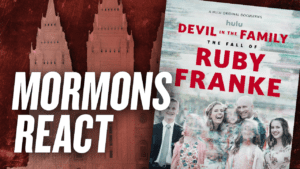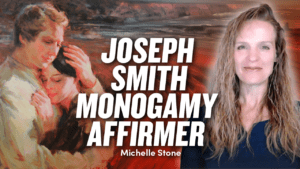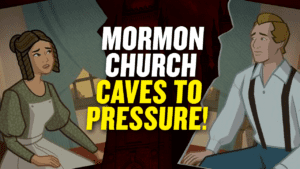In 2014 the LDS Church released an essay entitled “Race and the Priesthood” as part of its Gospel Topics Essays Initiative. This essay was groundbreaking in that it officially renounced past LDS racist teachings regarding blacks and the LDS Priesthood. This essay has been highly controversial. Some see it as groundbreaking positive progress. Some see it as deceptive and/or inadequate. Others lost their faith in the LDS Church because of it.
Today on Mormon Stories Podcast we interview Dr. Matt Harris who recently published an analysis of the Race and Priesthood essay. Matt’s essay is entitled “Whiteness Theology and the Evolution of Mormon Racial Teachings.” This essay is contained within the newly released book entitled “The LDS Gospel Topics Series: A Scholarly Engagement” published by Signature Books (edited by Matt Harris and Newell G. Bringhurst).
Click here to purchase this very important book.




7 Responses
John and Matt:
Excellent overview of the church’s troubled history with race. I have a question for you and for other listeners.
When I was growing up in S.E. Idaho in the 60s and 70s the story was passed around in our small town about “a couple” (but no one local) who had made all necessary preparations to be sealed in the temple. On the day of their wedding the temple doors would not open. It was eventually determined that one of them had “Negro blood” which had not been known before this terribly embarrassing day. (No specific temple was named…back then there were less than 10) I heard that story innumerable times through the years, and I wonder how widespread this “Mormon folklore” was?
Thank you both for your work. Light is more satisfying than darkness, and company on the pilgrimage is always a comfort.
E.B.:
Unfortunately, the story you shared about the person having “the curse” and being denied a temple marriage happed all-too often.
I write about this in an article that Dialogue published a couple of years ago: https://www.dialoguejournal.com/wp-content/uploads/sbi/articles/Dialogue_V51N03_4.pdf
See pp. 94-95.
Matt:
Thank you for your reply and for your link. What I didn’t make clear was that in the story circulating about the doors not opening, it was unseen and supernatural forces that physically held the doors shut.
John and Matt
I thoroughly enjoyed listening to this. One of my favorites for sure. As a huge history buff, I soaked up every story. It’s nice to understand the timeline, thought processes and relevant voices behind the ban and the lifting of the ban.
I agree with Matt’s statement about not seeing people as one dimensional however it is hard when there was so much unsavoury behavior, decisions and attitudes going on within the church. I absolutely love my TBM mom but she taught us that we shouldn’t date or marry outside of our race. She would have struggled if I brought a black man home for dinner. But this is because that’s what she was taught and so on. I was taught in seminary that the mark of Cain and the curse upon the Laminates was very literal. Unfortunately, these teachings made me racist but with a “Christ-like love” type racism which was generally tolerated within the church. Now my kids are taught in seminar that the cursings are not skin colour related, as John mentioned. Each generation is definitely a product of the church’s reactionary narration. I now enjoy teaching my kids that they can date and marry whomever they want, no religious boundaries anymore. I will definitely be buying the book. Thank you for a most informative podcast!!
Matt Harris…a very interesting analysis.
In a sense it’s a form of child abuse because Mormon youth will remember the pictures in illustrated Book of Mormons showing the curse being effected upon Lamaan and his family.
Notice how that is no longer portrayed any longer but the scriptural texts remain. Otherwise the story makes no sense
What of the Aposrle Spencer Kimball remark that the Indians in the placement scheme were getting whiter than those on the Hogan.
Thank you for this episode! I believe it is beyond due that members and ex-members discuss these aspects of the church and the long running under currents that still exist in the culture of Mormonism.
I would love if John would do more podcasts with ex-members of colour who grew up in the church especially during the years when racist attitudes were so prevalent in Mormon culture.
Personally, it would mean a lot to me as a mixed race ex-Mormon who grew up in the church during the 70’s and 80’s. It lead to a feeling of otherness and of being a second class member. I felt that I was required to feel ashamed of half of me.